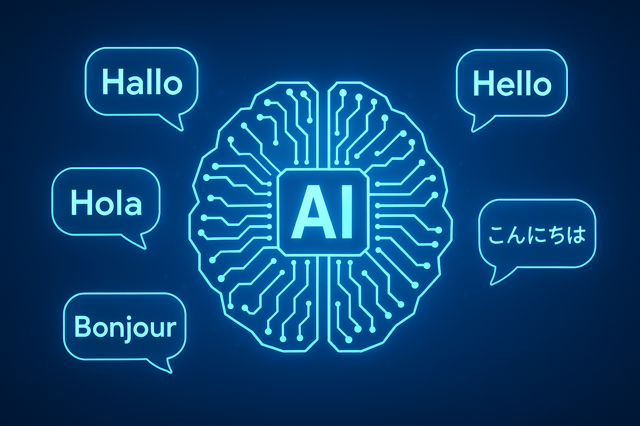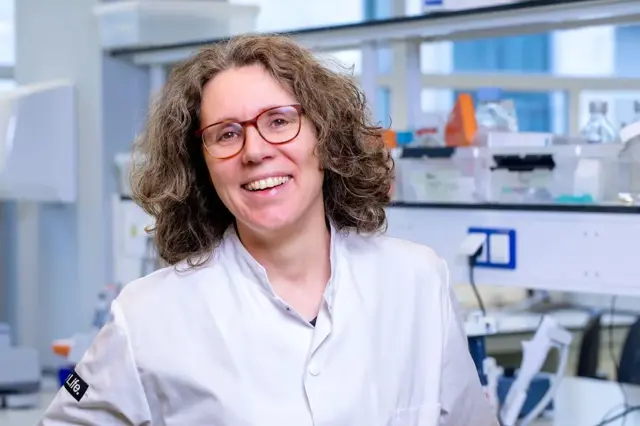< Back to news
How would you describe the rise of AI?
For me, Artificial Intelligence (AI) is the most exciting field in computing. Its history can be described as a kind of rollercoaster ride of great expectations and ambitions that culminated in both failures and wonderful discoveries. Some developments went faster than expected, others much slower. In the 1960s, for instance, American researchers confidently predicted that a computer could beat the world chess champion within five years. It finally succeeded only in 1997, almost 40 years later. But that was not yet the AI as we know it today.
What were the key developments?
In the 1980s, research mainly focused on developing expert systems to support human specialists, such as doctors in making diagnoses. These models were manually programmed with thousands of decision rules, often with direct input from experts. Today, we work on a much larger scale and have systems with hundreds of millions of rules and huge medical databases, based on which AI can provide advice. At the same time, machine learning broke through in recent decades. In this, you don't input rules but AI learns to discover patterns on its own. Then you give the computer large amounts of examples, for example patient records, and then it learns by itself which drugs work for which diseases. So today there are two schools of AI: the knowledge-based approach, with millions of explicit rules, and machine learning, where computers learn from examples without instructions. The challenge now lies in merging these two approaches, which is complicated in practice by differences in the underlying mathematics and methodology.
How was machine learning able to take off like this over the past decade? 


9 November 2023
Frank van Harmelen on how humans and machines can successfully work together
Frank van Harmelen is professor of Artificial Intelligence at VU University Amsterdam and sits on the advisory committee for the Ammodo Science Awards.
Since 2020, he has been director of the Hybrid Intelligence Centre researching AI systems for the future. 'Hybrid intelligence is all about successful collaboration between humans and machines, where the whole is more than the sum of the parts.'
How would you describe the rise of AI?
For me, Artificial Intelligence (AI) is the most exciting field in computing. Its history can be described as a kind of rollercoaster ride of great expectations and ambitions that culminated in both failures and wonderful discoveries. Some developments went faster than expected, others much slower. In the 1960s, for instance, American researchers confidently predicted that a computer could beat the world chess champion within five years. It finally succeeded only in 1997, almost 40 years later. But that was not yet the AI as we know it today.
What were the key developments?
In the 1980s, research mainly focused on developing expert systems to support human specialists, such as doctors in making diagnoses. These models were manually programmed with thousands of decision rules, often with direct input from experts. Today, we work on a much larger scale and have systems with hundreds of millions of rules and huge medical databases, based on which AI can provide advice. At the same time, machine learning broke through in recent decades. In this, you don't input rules but AI learns to discover patterns on its own. Then you give the computer large amounts of examples, for example patient records, and then it learns by itself which drugs work for which diseases. So today there are two schools of AI: the knowledge-based approach, with millions of explicit rules, and machine learning, where computers learn from examples without instructions. The challenge now lies in merging these two approaches, which is complicated in practice by differences in the underlying mathematics and methodology.
How was machine learning able to take off like this over the past decade?
It was possible because of two crucial factors: the availability of immense computing power and access to large data sets. In particular, big data sets are essential because machine learning depends on a plethora of training examples. Translating from English to Chinese, for example, cannot be fully described by rules, but if you have enough English texts and corresponding Chinese translations, the system can recognise patterns independently. The past decade has also seen the emergence of deep learning, which allows computers to discover complex patterns in data that were previously invisible. This has spawned new applications such as facial recognition, machine translation and self-driving cars.
You are director of the Hybrid Intelligence Centre. What was the driving force behind the creation of this centre?
We started in 2020 thanks to a €20 million Gravity Grant. Our goal is to develop AI systems that can work effectively with humans, resulting in hybrid teams where human and computer intelligence complement each other. Within the Hybrid Intelligence Centre, seven universities work together, each with three or four research groups with their own areas of expertise. In total, we now have around eighty PhD students so this gives us real clout. In 2020, we were pioneers with such large-scale and interdisciplinary research into hybrid intelligence. Proper ideas are often developed simultaneously, and now work on this subject is being done worldwide under different names: in Germany they call it Human Centric AI, and there is even a Stanford Centre for Human-Centered AI. There is a growing realisation that the future of AI is not about replacing humans, but about supporting them, making them more efficient and making them work at a higher level.
Vergelijkbaar >
Similar news items

September 9
Multilingual organizations risk inconsistent AI responses
AI systems do not always give the same answers across languages. Research from CWI and partners shows that Dutch multinationals may unknowingly face risks, from HR to customer service and strategic decision-making.
read more >

September 9
Making immunotherapy more effective with AI
Researchers at Sanquin have used an AI-based method to decode how immune cells regulate protein production. This breakthrough could strengthen immunotherapy and improve cancer treatments.
read more >

September 9
ERC Starting Grant for research on AI’s impact on labor markets and the welfare state
Political scientist Juliana Chueri (Vrije Universiteit Amsterdam) has received an ERC Starting Grant for her research into the political consequences of AI for labor markets and the welfare state.
read more >